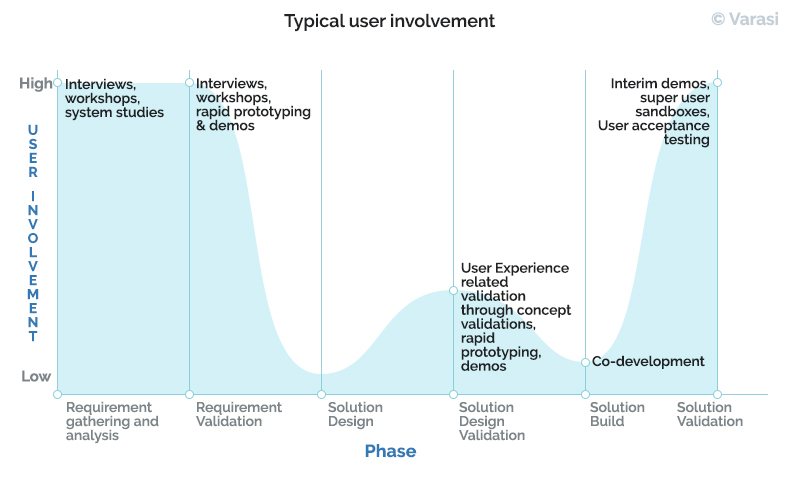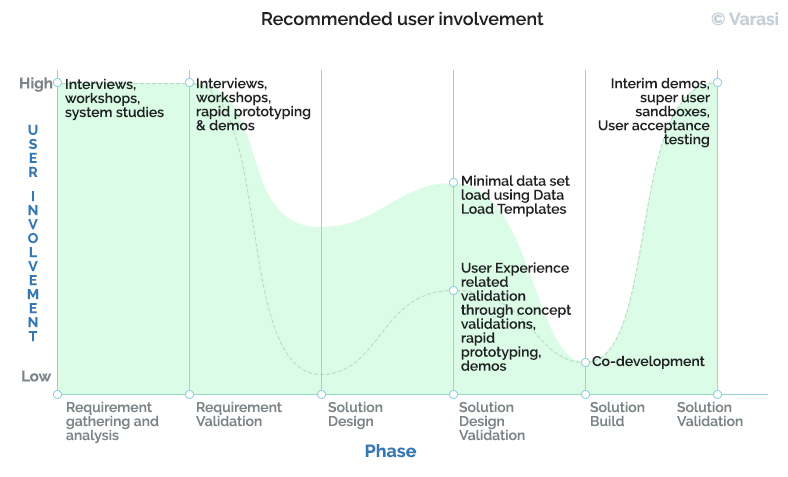- Stronger Customer Relationships
- +1-949-878-7411
- ramana@varasi.com
Better Salesforce Solutions by Involving Users in Solution Design

The traditional way to validate design in most projects is to bring in technical experts for design reviews. This practice has benefits and you should continue to use it. Technical experts recognize design patterns, enforce best practices, ensure compliance and help you avoid common mistakes. In this article, we suggest ways to involve users a lot more during solution design and benefit from their involvement.
In most implementations, users are involved in the design of the solution to some extent – mainly through User Experience Design, regardless of whether you use user experience specialists. We have all experienced the power of rapid prototyping – a working prototype and demo of the solution being designed is much more powerful than using documents and presentations. A good User Experience Design can become a key factor in determining the success and adoption of your solution. If involving users during design makes such an impact in the end result, then why not do more of it?

The key to increasing user involvement during design phase is to make it easy for them to understand the design and provide inputs. Visual user stories for key workflows and approval processes, working prototype demos, sample reports with meaningful data are just a few examples of methods that can be used to convey the solution design to end users. One of the foundational elements of a design is the underlying data model that governs the functioning of the solution. It is also one of the hardest areas to involve users in because it is articulated and communicated through ER diagrams. One of the tools we have effectively used for this purpose across our Salesforce implementations is Data Load Templates.
Data Load Templates are templates that enable your users to provide you with a data set that can be loaded into the system in an automated way to make the system immediately usable i.e. no need to manually setup base data before first use. We encourage you to include a minimal data set load as part of your solution implementation goals even if a full-fledged data load and migration is out of scope. We recommend including metadata as well as some transactional data as part of this process. Data Load Templates help you articulate your data model in a way that any non-technical user can understand. When a user uses these templates to provide you with the minimal data set, it will smoke out design flaws. Wrong or missing entity relationships, incorrect data types, mandatory field decisions and missing fields are just a sample of the flaws that it can help expose.

More user involvement during the solution design process can lead to better design and adoption. Data Load Templates are a great way to increase user involvement during the design process regardless of your project methodology (waterfall/iterative/hybrid). This has an added benefit of increasing the users’ familiarity with the solution.
Author
Anil Nair, Managing Principal, Varasi



